PROTECTiT STOP RISING DAMP
We offer a thorough, professional and complete service that will address the specific problems of Rising Damp in your building. Testing and reporting is carried out with the IBIX HygroLAB and the report that we produce will identify all relevant findings that allows us to make our recommendations.
These parameters can then be re-tested and comparatively reported post-installation of the PROTECTiT SRD system, so that its performance since installation can be accurately determined.
• Non-invasive
• Non Destructive
• No Electrodes
• Safe, Easy & Quick to install

Rising Damp - Complete Solution
Our service has 4 key stages:
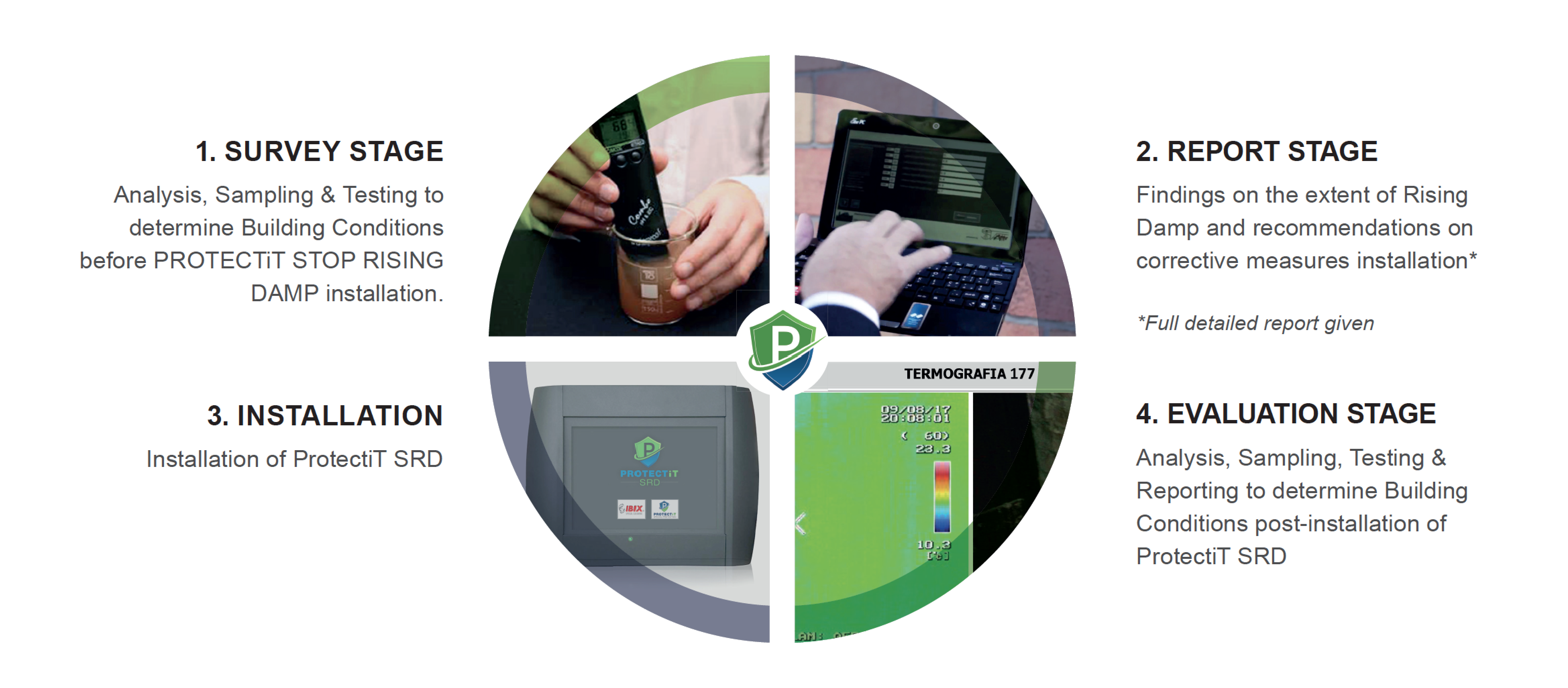
Rising Damp – Why it happens?
In older buildings you can often see a common damage pattern. In the lower areas of the foundation walls the paint peels or the plaster flakes off . Often, the damage is so severe that the joint work breaks apart and the structural stability of the building is endangered. These typical damage patterns all have the same cause - rising damp.
Structural dampness is the presence of unwanted moisture in the structure of a building, either the result of intrusion from outside or condensation from within the structure.
The moisture will continue to rise until it reaches a height where, unless no evaporation is possible, gravity takes over and pulls it down again. This height is seldom more than 1.20m, although deposits of ‘salts’ may be found higher in the wall, often driven there by the use of non-breathing plasters, renders, ‘tanking’, paints or vinyl wall papers.
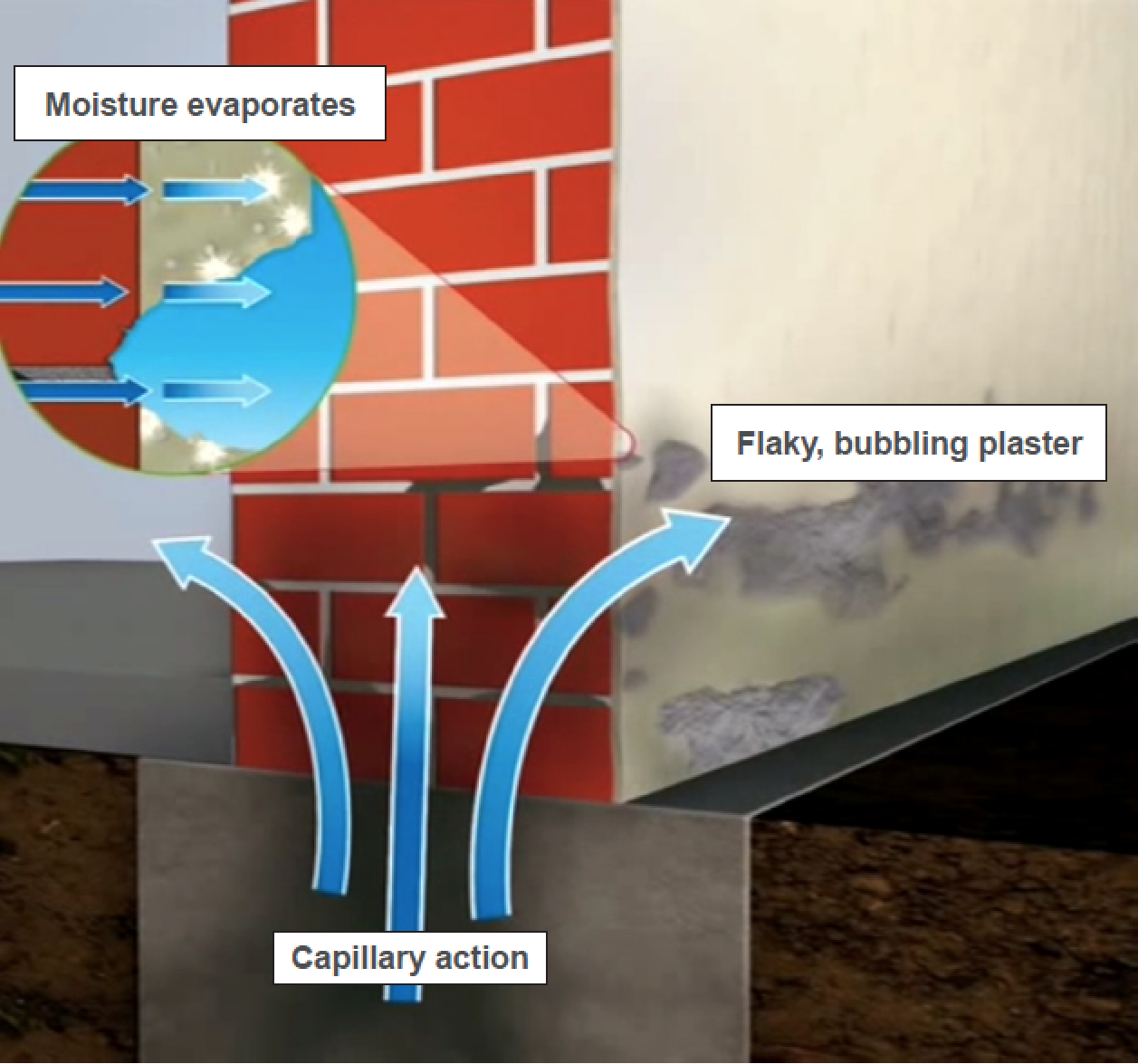
How to identify Rising Damp?
Any masonry structure unprotected by a properly installed course to prevent rising damp is susceptible to natural rising damp. As shown here in the graphic, moisture is soaked up from the ground through capillary action.
Just like a sponge the water transports minerals including damaging salts which are deposited in the wall and on the wall surface. In the areas where the moisture can evaporate the damage is most visible.
Typical symptoms of Rising Damp:
- Mold on walls
- Peeling paint, flaky or bubbling plaster Damp, wet patches, stains, white powder or crystals appearing on the surface of the walls
- Crumbling mortar between bricks or stonework on the exterior of the building
- Rotting window frames or floorboards
STOP Rising Damp
Non-Invasive Electrophysical Dehumidification of the Surfaces
PROTECTIT SRD is an electrophysical dehumidification systemwith “multifrequency pulse” technology that resolves the problem of capillary rising damp.
This small but very effective device generates an electromagnet field inside the masonry that interacts with the water molecules, preventing them from rising.
Unlike other systems that use a single frequency, PROTECTiT SRD instead generates a stream of pulses at different frequencies that let you achieve excellent results on all types of masonry structures, no matter what the geometry of the capillary pores and the composition of the masonry may be.
It is also completely harmless for living beings.
The magnetic induction generated by PROTECTiT SRD is lower than that of a light bulb

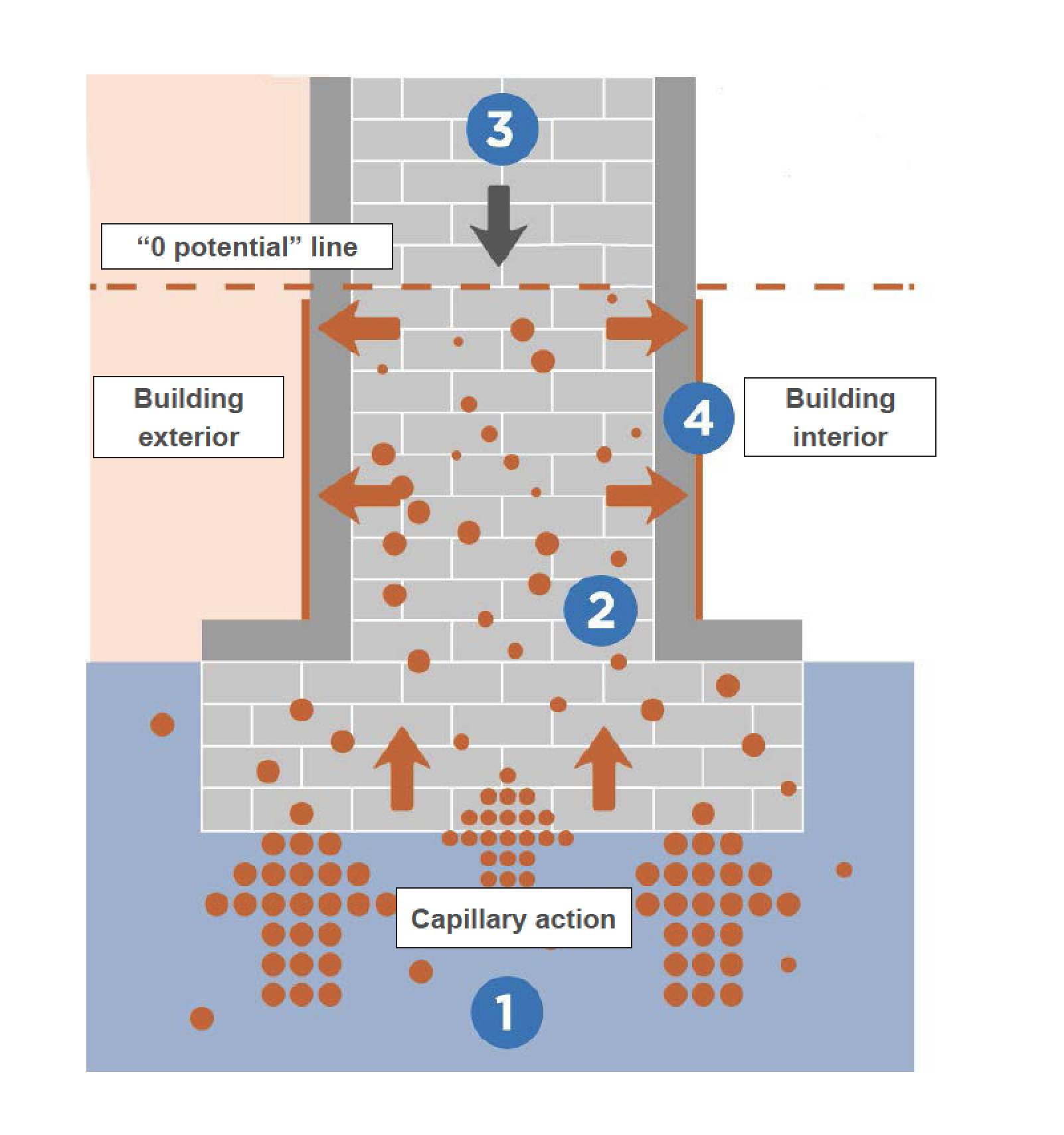
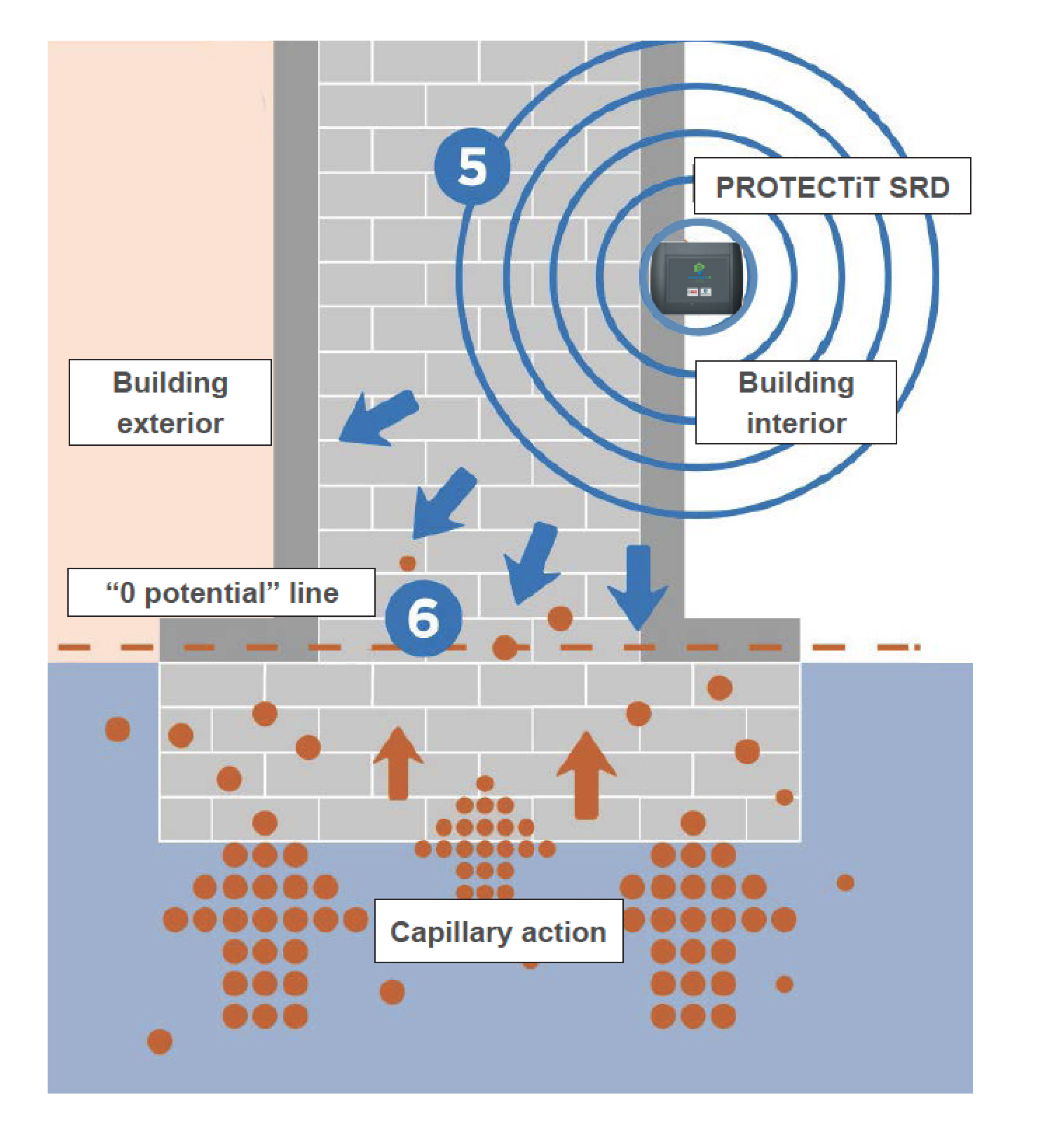
How PROTECTiT SRD acts on Rising Damp?
Due to their dipolar nature, water molecules are attracted by electrical forces inside microscopic channels called capillaries.
Each molecule in the soil can thereby migrate upward through the capillaries into building foundations and walls.
As shown here in the graphics molecules travel upward, the water dissolves and transports salts found along the way which are one of the primary causes of plaster deterioration.
The ascent stops along the “0 potential” line where capillary adhesion and the force of gravity balance out.
At this point, the water in the walls evaporates, transferring into the rooms, and it is replaced by other water in the soil.
PROTECTiT SRD generates pulses that disturb the electrical adhesion forces inside the walls’ capillaries. With constant and targeted work, it returns the “0 potential” line to the ground, repelling the water to the soil. This stops the formation of mould, preventing the risks to property integrity.
PROTECTiT SRD Range of Action:

Operation Example
PROTECTiT SRD devices are fastened to the wall at a height of about 2.20 m with four simple anchor screws and then connected to a common 220 Volt electrical socket.
Installation of only 2 units can fully resolve chronic rising damp problem in a typical parish church.
With an essential design and very contained dimensions, PROTECTiT SRD can even be positioned behind the furniture.
Average magnetic induction in microTesla (μT) at the various distances:
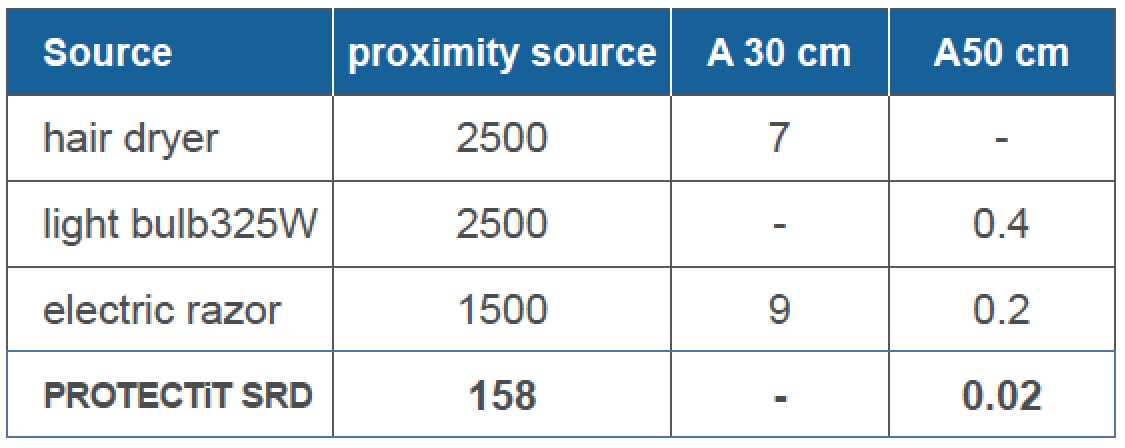
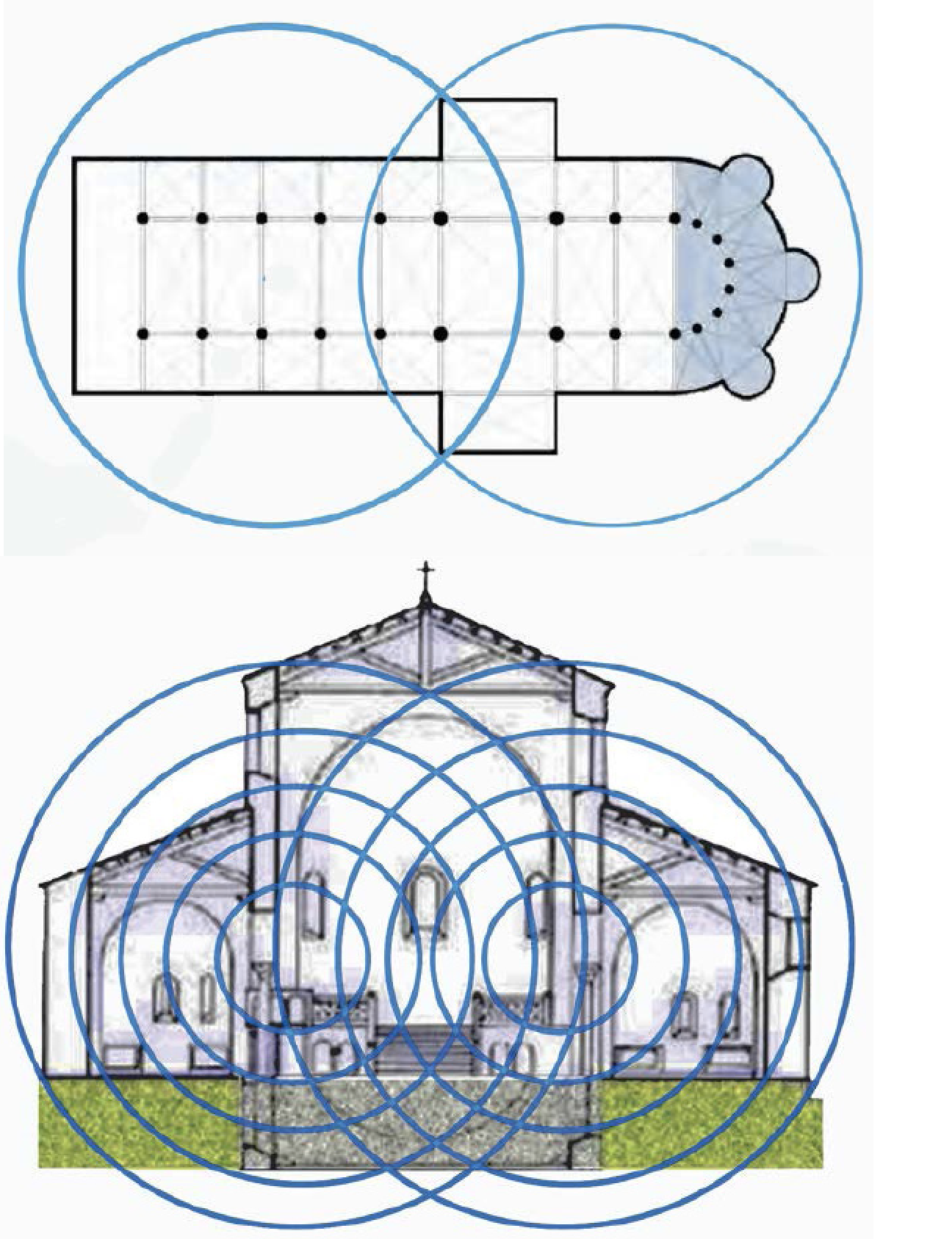
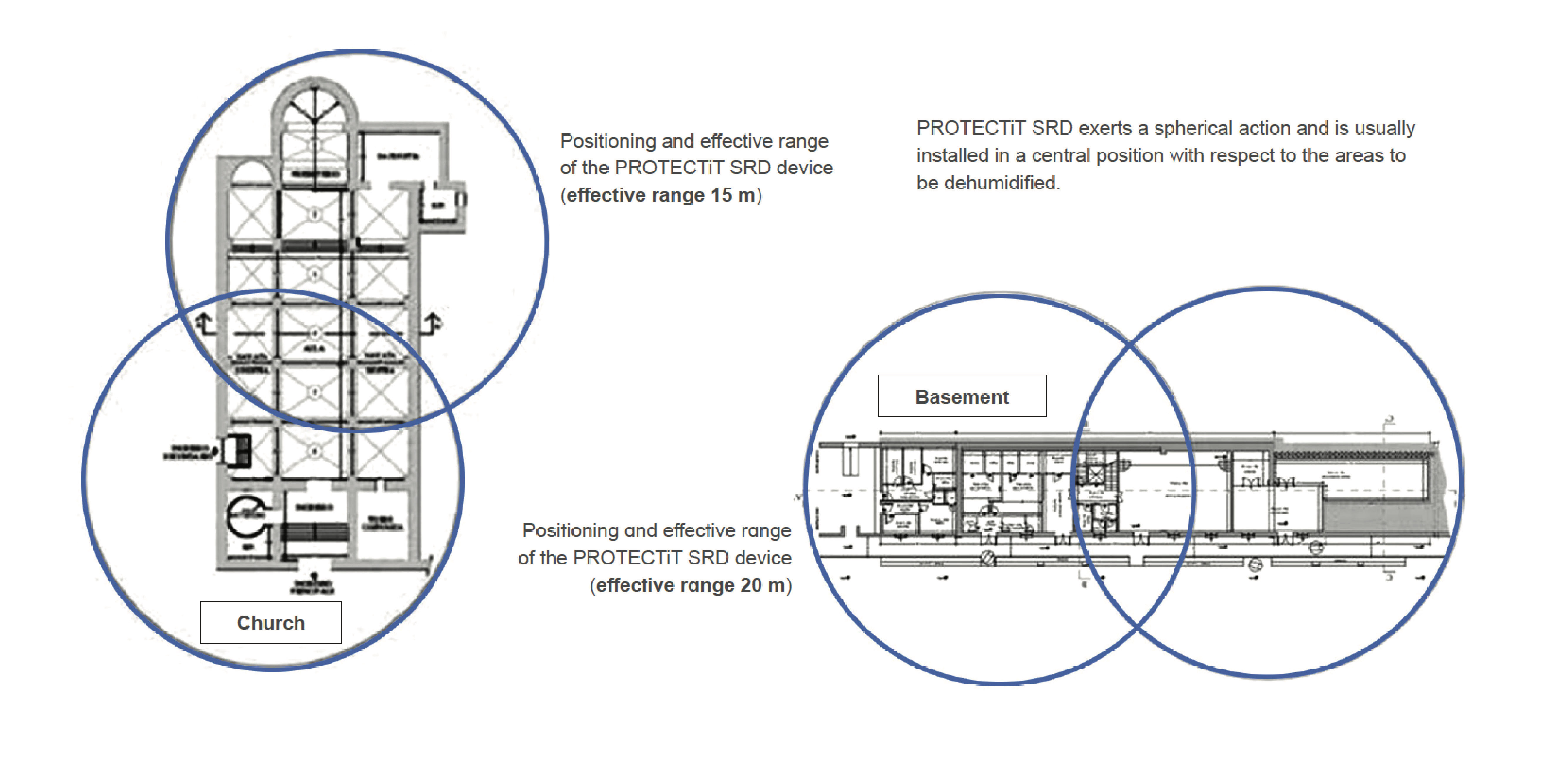
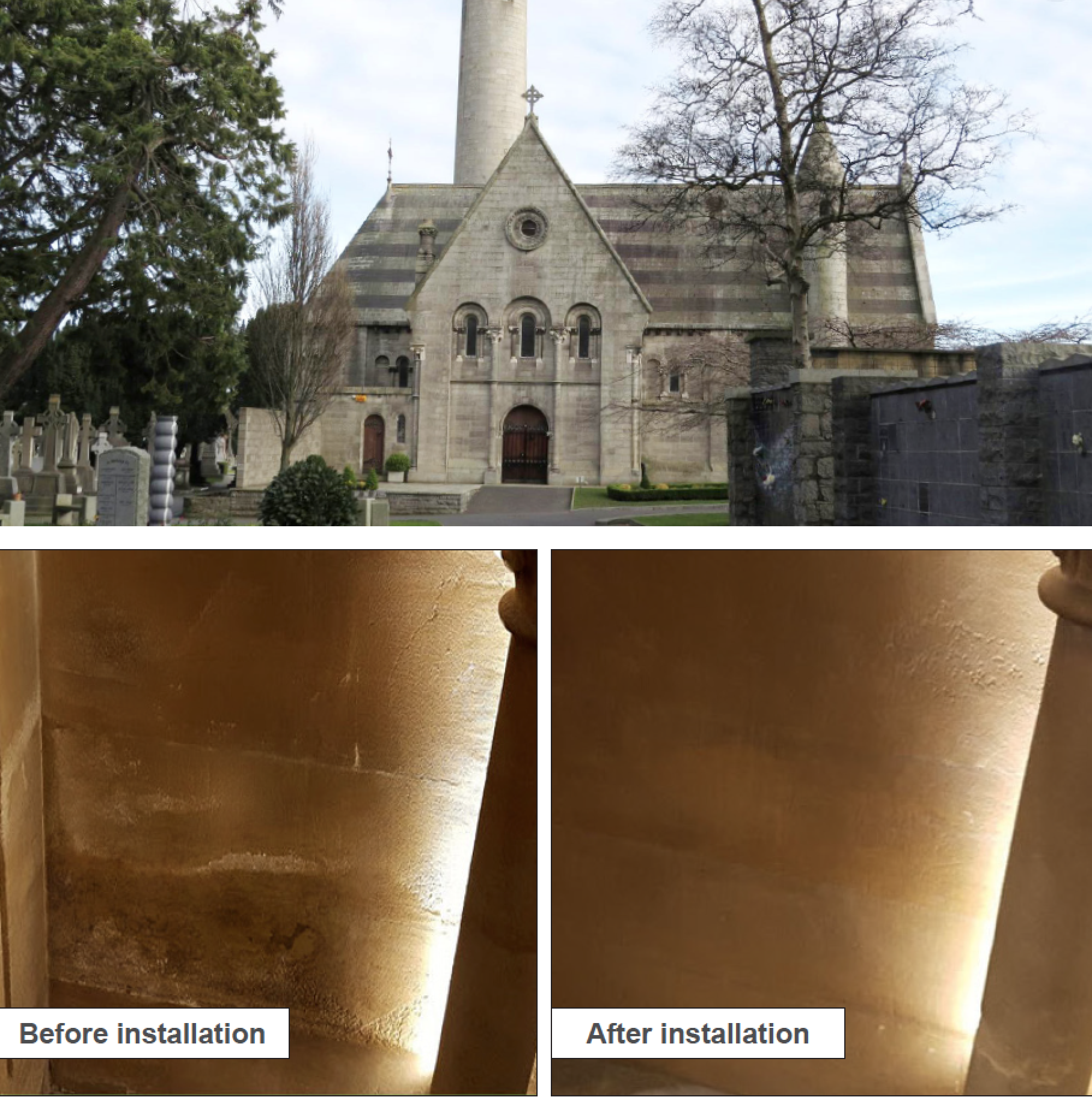
Glasnevin Cemetery Church
Stop Rising Damp - Case Study
Project: Glasnevin Cemetery Church, Dublin, Ireland
Client: Glasnevin Trust
We were challenged to assess the Mortuary Church on the Grounds of Glasnevin Cemetery and to provide a solution for the chronic rising damp on the internal walls of the Church.
Glasnevin Trust contacted us 6 weeks after installation of PROTECTiT SRD device to request that we re-visit the church to see the results first hand.
The pictures on the left illustrate supressed capillary action of the rising damp and complete removalw of the unsightly salt deposits which were visible on the surface for many years.
Following this successful installation of PROTECTiT SRD, the Glasnevin Trust have installed a second unit in the Mortuary Church which now sees all the floor area of the church covered.




